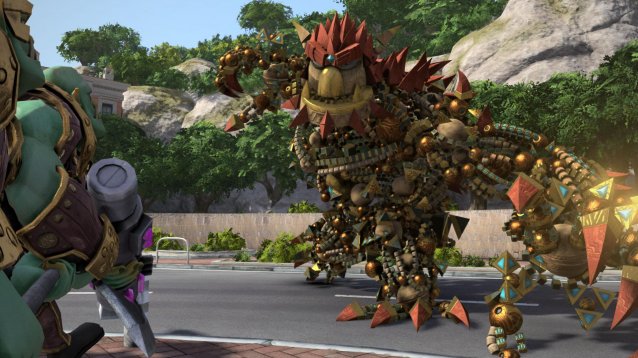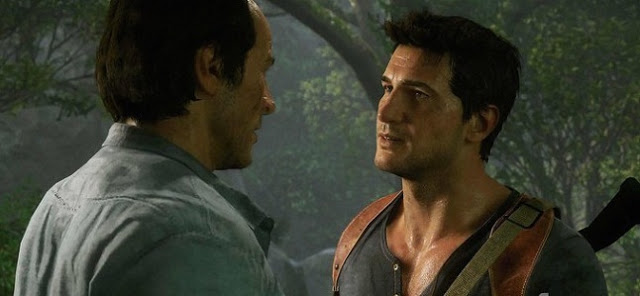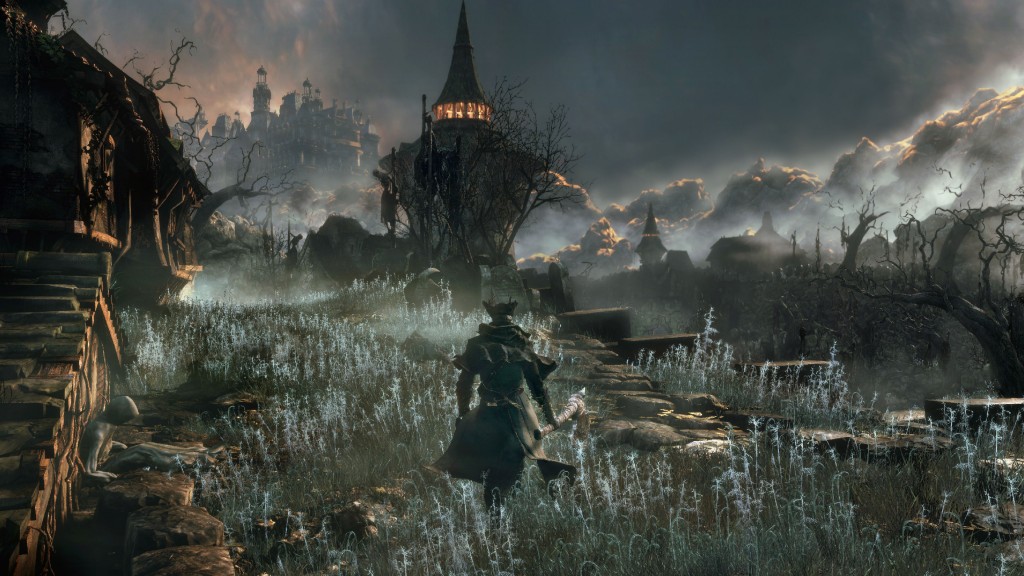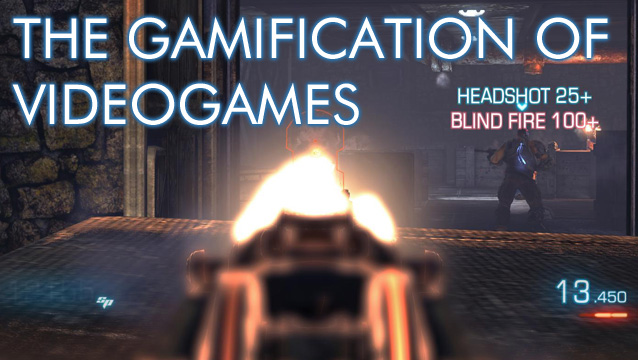

Despite being a new IP, Dishonored plays and feels like several games that have come before it. It’s rare that a game review requires a preface, but in Dishonored‘s case it’s important so as to not repeat the same qualification over and over again. The game’s developer, Arkane Studios, shares a long history with the BioShock, Deus Ex, and Half-Life franchises, and by extension borrows liberally from those games’ lead.
By no means does Dishonored “rip off” any of these games whole cloth, nor is it a copy/paste job, but describing the game’s mechanics, its story, and even its aesthetics will call to mind those titles. Elements like the ability to assign powers and weapons to both the right and left hand, a dystopian city ravaged by a plague and controlled by a corrupt government, and a wide variety of branching pathways all sound like key selling points to one or all of these hit titles, and are all a part of Dishonored‘s DNA. Yes, the game is an original IP, but it’s also inspired by some of this and last generation’s most unique games. With that being said, the only question that remains is whether the game is deserved of such regal company? Read on to find out.
In Dishonored, players take on the role of Corvo Attano, Lord Protector to the Empress. Under the Empress the town of Dunwall has prospered, but the presence of a vile rat plague has put its citizens on edge, and in some cases transformed them into mindless “zombies.” Regardless of the Empress’ low approval rating, her murder spurns her underlings into action, labeling Corvo the culprit and sentencing him to death.
By a matter of supernatural chance, Corvo manages to escape his execution, and begins his quest to not only find and punish those responsible for the Empress’ assassination, but to help her daughter Emily (who was kidnapped at the time of the Empress’ murder) find her way to the throne. It’s a story that should sound familiar — and hits many predictable notes along the way — but one that helps believably set-up the game’s nine missions, which are typically focused on eliminating a target or targets.
While the “why” isn’t deserved of the game’s beautifully designed town of Dunwall — a kind of steam punk, Victorian Era England — the “how” is more than worth the journey. Players can exact their particular brand of revenge (through Corvo) in a wide variety of ways. As we’ve already detailed in an early preview of the game, Dishonored provides the player with a large selection of powers, weapons, and buffs that allow them to experience the title however they choose.
For example, the ‘Blink’ power allows the player to instantaneously teleport vertically and horizontally, and more importantly seek out alternate entry points to buildings and strongholds; whereas the ‘Stop Time’ power allows them to take a more offensive route, and attack several enemies at once, albeit with a significant advantage. Conversely, those two powers can be used to benefit a different type of play style — Blink can help the player get the drop on an unsuspecting enemy, and Stop Time can be used to scurry past a patrol of guards who are stuck in place.
That’s part of the beauty of Dishonored: it never tells you how to play, but simply lets the player decide how best to use the tools they are given. In fact, the game even provides the player with more traditional weapons to supplant, or replace, those powers as additional forms of offense. Any gamer that wants to simply attack each enemy with a sword in the right hand and a crossbow/pistol in the other can do so, and they’ll never have to worry about utilizing, let alone upgrading, the game’s powers. Dishonored does encourage players to mix-and-match — the sword is the right hand’s only weapon, while the various powers and ranged weapons can only be mapped to the left hand — but it never expressly indicates what is the best plan of attack, and more importantly it never punishes the player for favoring one set-up over the other.
These choices are only further emphasized and highlighted by the game’s sublime level design. As was mentioned earlier, each of the Dishonored missions usually requires eliminating a target — guarded by various types of enemies, turrets, and other obstacles — but how one goes about doing so is left entirely up to the player. That isn’t to say the game has a clear-cut path to the target and then the player decides the way in which to kill them. Dishonored actually becomes more varied even after the player has traversed one of several different pathways and from there the player doesn’t even need to “eliminate” the target – they can actually neutralize them by completing an optional side quest.
A perfect example is the Golden Cat mission that’s been detailed extensively since the Dishonored E3 preview. In that mission the player is asked to eliminate the Pendleton Brothers — two corrupt members of the upper class, and underlings to the game’s “big bad” — who hold in their possession clues to Emily’s whereabouts. Now, just getting to the Pendletons is a road paved with choices — traverse the rooftops, swim through the sewer as a fish (did we mention the game’s possession ability? Yeah, it’s awesome), or walk through the front door swords and gun blazing — but how the player actually eliminates them is where the real options come in.
Those interested in a better explanation of the various forms of target elimination can check out the branching path walkthroughs released by Arkane earlier this year, but be aware that those are just two of the more inventive ways to dispose of the Pendeltons. Like most of them, this particular mission can even be completed without ever coming into contact with the Pendletons. We won’t spoil any of the game’s more complex missions here, but believe us when we say Dishonored only continues to get more and more inventive, and even evolves beyond its standard “eliminate the target” mission objective before its 10-12 hour completion time is up.
It’s hard to explain what makes Dishonored so great because a lot of its success comes from its ability to provide the player with choice. So many games aspire to that idea, but very few deliver in the way that Dishonored does. There’s still a lot of linearity to each mission, and that helps keep the player from becoming overwhelmed with choice, but getting from point A to point B, and then deciding what to do from there, is so varied that it’s only when a mission is completed that the player truly understands where the divergent paths are.
A player that favors a stealthy approach, for example, will feel like they are traversing the only possible route — that is until they discover a player who upgraded their Blink power (all powers can be upgraded by finding special Runes scattered throughout each level) could have zipped across the rooftops and entered through a window. It’s a form of creativity that few games deliver, but when they do they really standout.
Dishonored isn’t perfect, though, it actually possesses quite a few technical flaws. But things like a few less-than-realistic AI behaviors (enemies losing their alert state after a minute or two) and problems with the game’s collision detection by no means ruin the experience. With so many powers and possibilities at the player’s fingertips we’re surprised more things didn’t go wrong.
The game’s story is also fairly predictable, even if it does provide enough twists to keep the player guessing. And its conclusion could be seen as lackluster, dependant on how the player approaches that particular sequence. To that point, there’s a very deliberate approach that can be had with the game — a no nonsense modus operandi that favors killing every enemy indiscriminately — that not only allows for the game to be completed in only a few hours, but wouldn’t be all that fun. It’s one of the drawbacks of a game with so much choice, but for those (hopefully few) players who choose not to accept Arkane’s playground and toys, the game won’t provide a unique or memorable experience.
Outliers aside, Dishonored should be counted among this year’s must-play games if for no other reason than its existence as an original IP that delivers on its promise of a varied experience. Yes, the game borrows heavily from games like BioShock, Half-Life, and Deus Ex but it iterates on those games’ ideas enough that it doesn’t feel like a retread or rehash of played out concepts.
Those games are actually in such high demand these days, and released so infrequently, that Dishonored makes a perfect substitute. It’s rare that upon completion a player feels like there’s a whole other side to the game they’ve yet to see — enticing them to play again — but Dishonored provides that feeling, and is well worth revisiting several times.
Will you be picking up Dishonored this Tuesday? How do you plan to approach the game’s missions: stealthily, guns blazing, or a combination of both?
Dishonored releases October 9, 2012 for the PC, PS3, and Xbox 360. Game Rant played the Xbox 360 version for this review.
–
Follow me on Twitter @ANTaormina for further discussion of Dishonored.




 6 Games to Waste Time at the Office
6 Games to Waste Time at the Office Uncharted 4: A Thiefs End everything we know about Nathan Drake
Uncharted 4: A Thiefs End everything we know about Nathan Drake F.E.A.R 3 Achievements for Xbox 360
F.E.A.R 3 Achievements for Xbox 360 Bloodborne Guide: Best Farming Spots for Blood Echoes, Blood Vials and Easy Level Up
Bloodborne Guide: Best Farming Spots for Blood Echoes, Blood Vials and Easy Level Up A Sum of Parts: The Point of Points and The Gamification of Videogames
A Sum of Parts: The Point of Points and The Gamification of Videogames